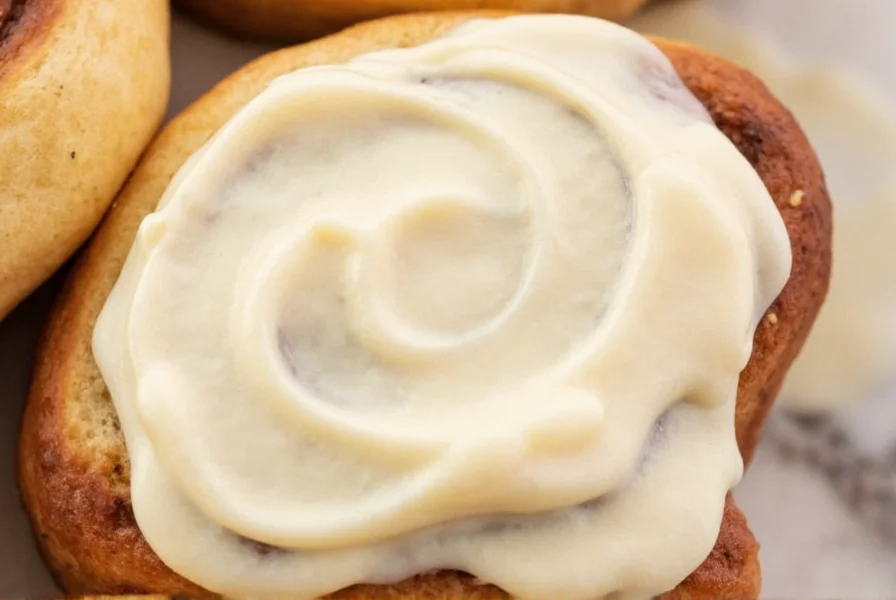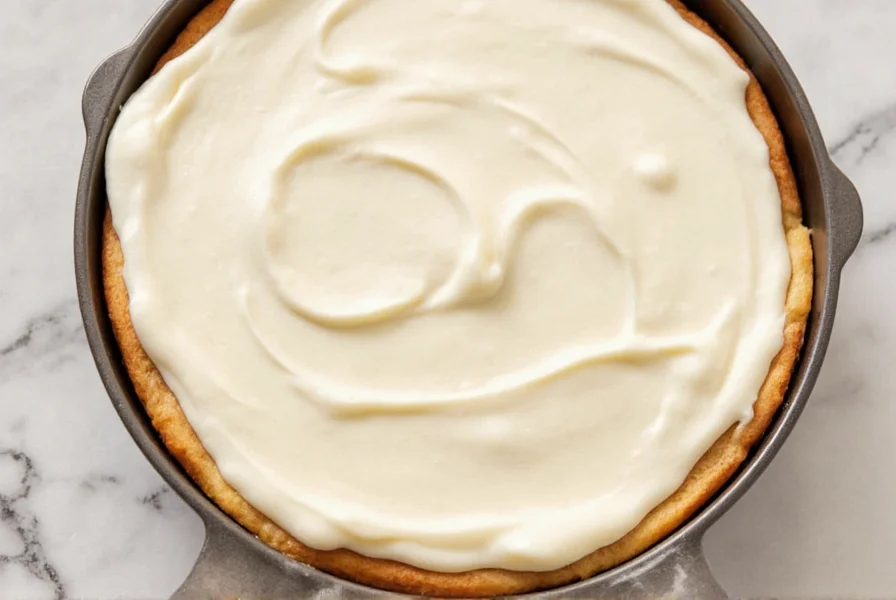Creating the ideal cream cheese frosting for cinnamon rolls requires understanding both ingredient chemistry and proper technique. Many home bakers struggle with runny or overly sweet icing that doesn't cling properly to warm rolls. The secret lies in balancing fat content, sugar concentration, and temperature control to achieve that signature tangy-sweet coating that defines exceptional cinnamon buns.
The Science Behind Cream Cheese Frosting Success
Cream cheese frosting works beautifully with cinnamon rolls because its slight tang cuts through the richness of the dough while providing structural integrity. Unlike traditional powdered sugar glazes that melt instantly on warm rolls, cream cheese frosting maintains its shape while still spreading smoothly. The ideal texture comes from the precise emulsion of fat (cream cheese and butter), sugar particles, and minimal liquid.
Professional pastry chefs emphasize that ingredient temperature is crucial. Room temperature cream cheese (about 70°F/21°C) incorporates more smoothly than cold product, preventing lumps while maintaining structure. Similarly, butter must be soft but not melted—when pressed with a finger, it should yield slightly without leaving greasy residue.
Essential Ingredients Breakdown
| Ingredient | Function | Professional Tip |
|---|---|---|
| Cream cheese (full-fat) | Provides tang and structure | Block style works better than tubs for proper consistency |
| Unsalted butter | Enhances spreadability and richness | Clarified butter creates extra smooth texture |
| Powdered sugar | Sweetens and stabilizes | Sift before measuring to prevent lumps |
| Vanilla extract | Enhances flavor complexity | Real extract outperforms imitation |
Step-by-Step Preparation Guide
Follow these professional techniques for flawless cream cheese frosting every time:
- Prepare ingredients properly - Remove cream cheese and butter from refrigerator 1-2 hours before use
- Cream fats thoroughly - Beat cream cheese and butter together for 3-4 minutes until completely smooth and pale
- Incorporate sugar gradually - Add powdered sugar 1/2 cup at a time, mixing well after each addition
- Add flavorings last - Mix in vanilla and salt only after sugar is fully incorporated
- Adjust consistency carefully - If too thick, add milk 1 teaspoon at a time; if too thin, refrigerate 15 minutes
Troubleshooting Common Problems
Even experienced bakers encounter issues with cream cheese frosting. Here's how to fix the most frequent problems:
- Runny frosting - Usually caused by warm ingredients or excess liquid. Solution: Chill mixture for 15-20 minutes, then rewhip. Avoid adding more sugar as this creates oversweet results.
- Lumpy texture - Typically from cold cream cheese. Solution: Return to mixer and beat longer, or pass through fine mesh sieve.
- Overly sweet taste - Balance with additional cream cheese (1-2 tablespoons) or a pinch of salt.
- Frosting slides off rolls - Apply to slightly cooled (not hot) cinnamon rolls. Ideal roll temperature is 120-140°F (49-60°C).
Delicious Variations to Try
Once you've mastered the basic cream cheese frosting for cinnamon rolls, experiment with these professional variations:
- Lemon-zest version - Add 1 tablespoon fresh lemon zest and 1 teaspoon lemon juice for bright contrast
- Bourbon-infused - Substitute 1-2 tablespoons bourbon for some of the liquid component
- Cream cheese caramel swirl - Layer with thin caramel sauce before frosting
- Spiced frosting - Add 1/4 teaspoon cinnamon or pumpkin spice to complement the rolls
Storage and Application Tips
Proper handling ensures your homemade cinnamon roll icing with cream cheese maintains optimal texture:
- Store unused frosting in airtight container for up to 5 days in refrigerator
- Bring to room temperature and rewhip before using refrigerated frosting
- For best results, apply frosting when rolls have cooled to 120-140°F (49-60°C)
- Use offset spatula for professional-looking swirls rather than spreading with knife
- For thicker cream cheese frosting for cinnamon rolls, increase cream cheese ratio by 25%

Why This Recipe Works Better Than Others
Many cinnamon roll cream cheese frosting recipes fail because they use improper ratios or techniques. This formulation succeeds by maintaining the ideal 2:1 sugar-to-fat ratio that provides structure without excessive sweetness. The inclusion of salt—often omitted in amateur recipes—balances the sweetness and enhances the cream cheese flavor.
Unlike recipes that call for milk or other liquids that weaken the structure, this method relies on the natural moisture in quality cream cheese. When executed properly, this easy cream cheese frosting for cinnamon rolls creates that perfect balance of tang and sweetness that complements rather than overwhelms the spiced dough.











 浙公网安备
33010002000092号
浙公网安备
33010002000092号 浙B2-20120091-4
浙B2-20120091-4